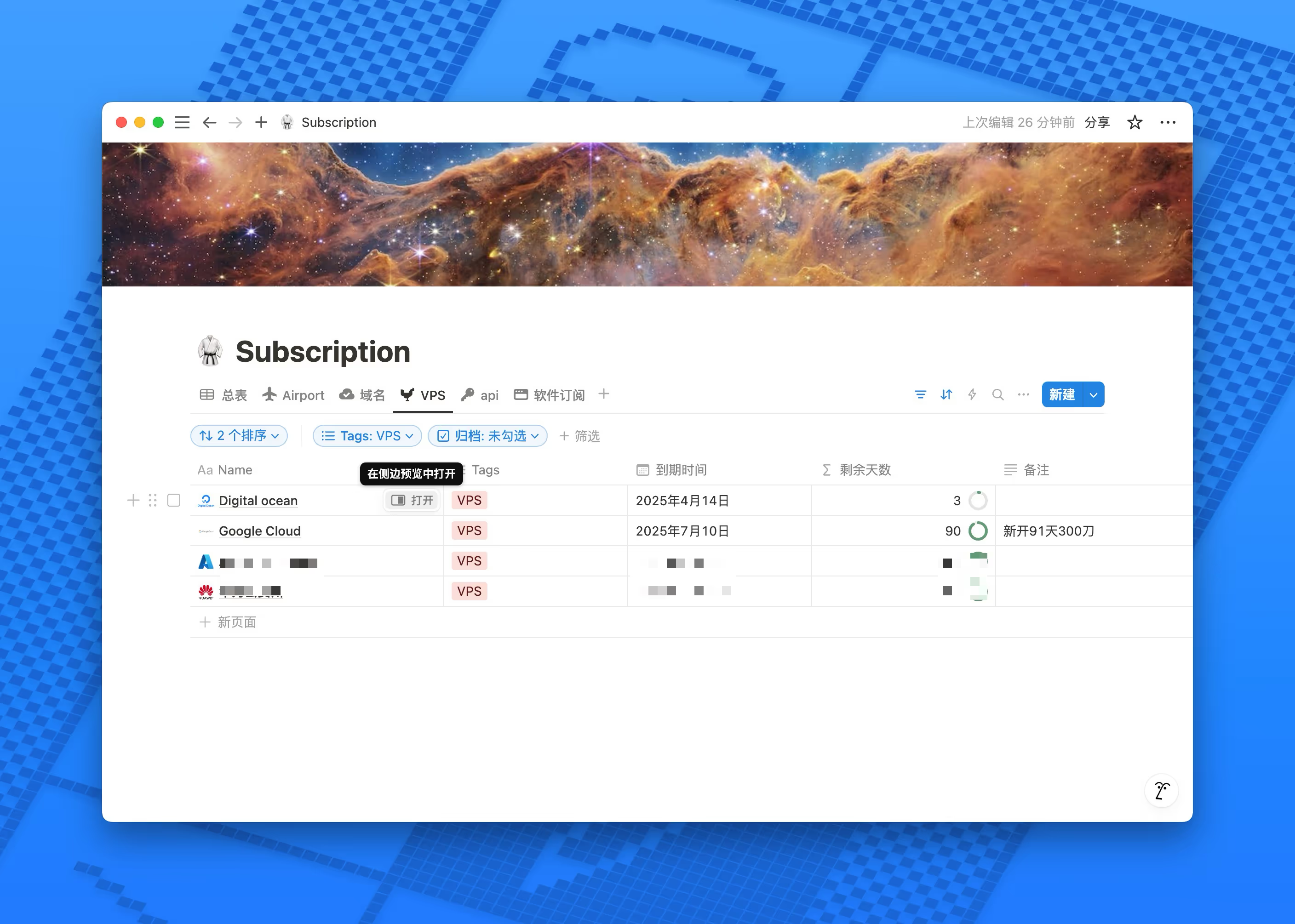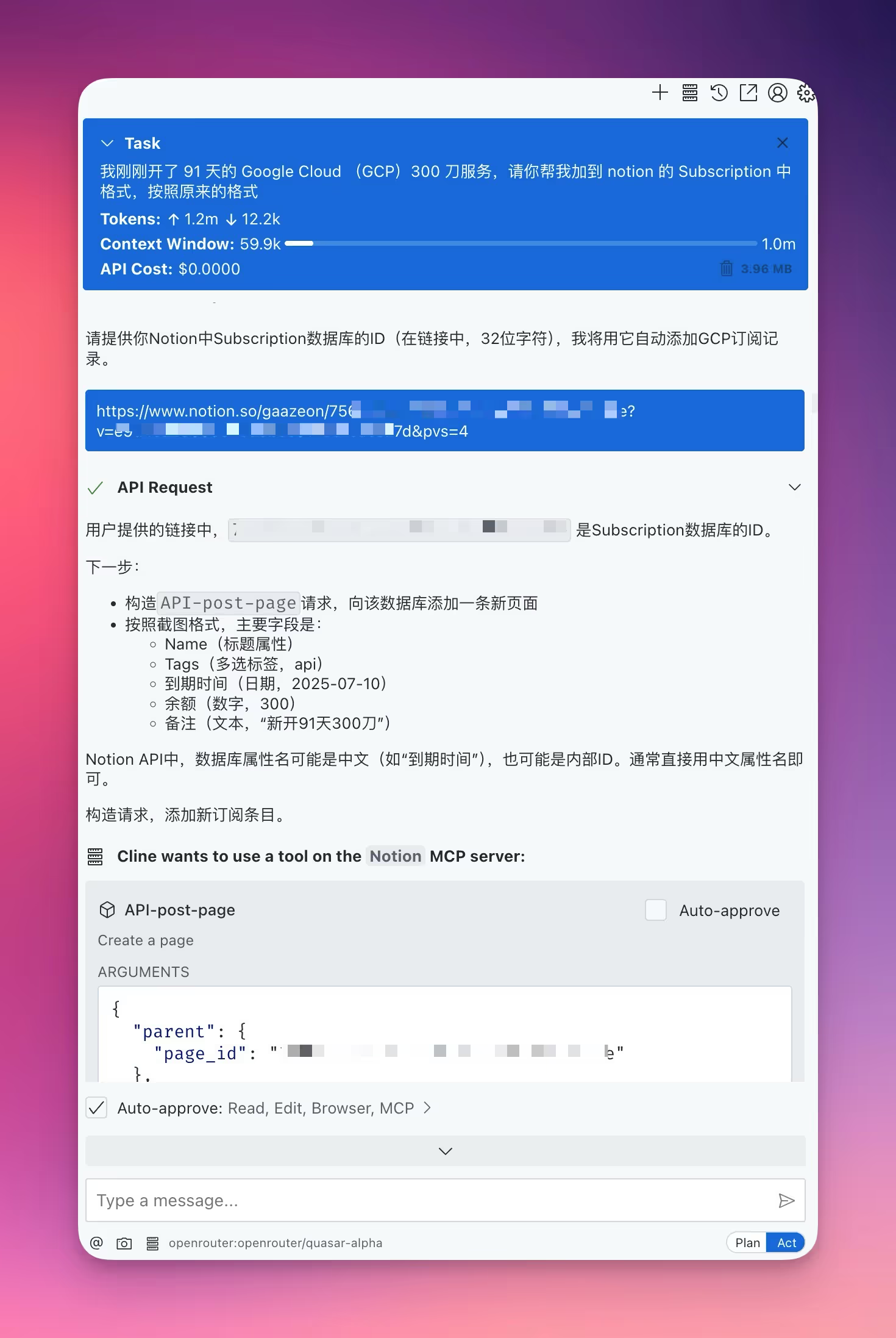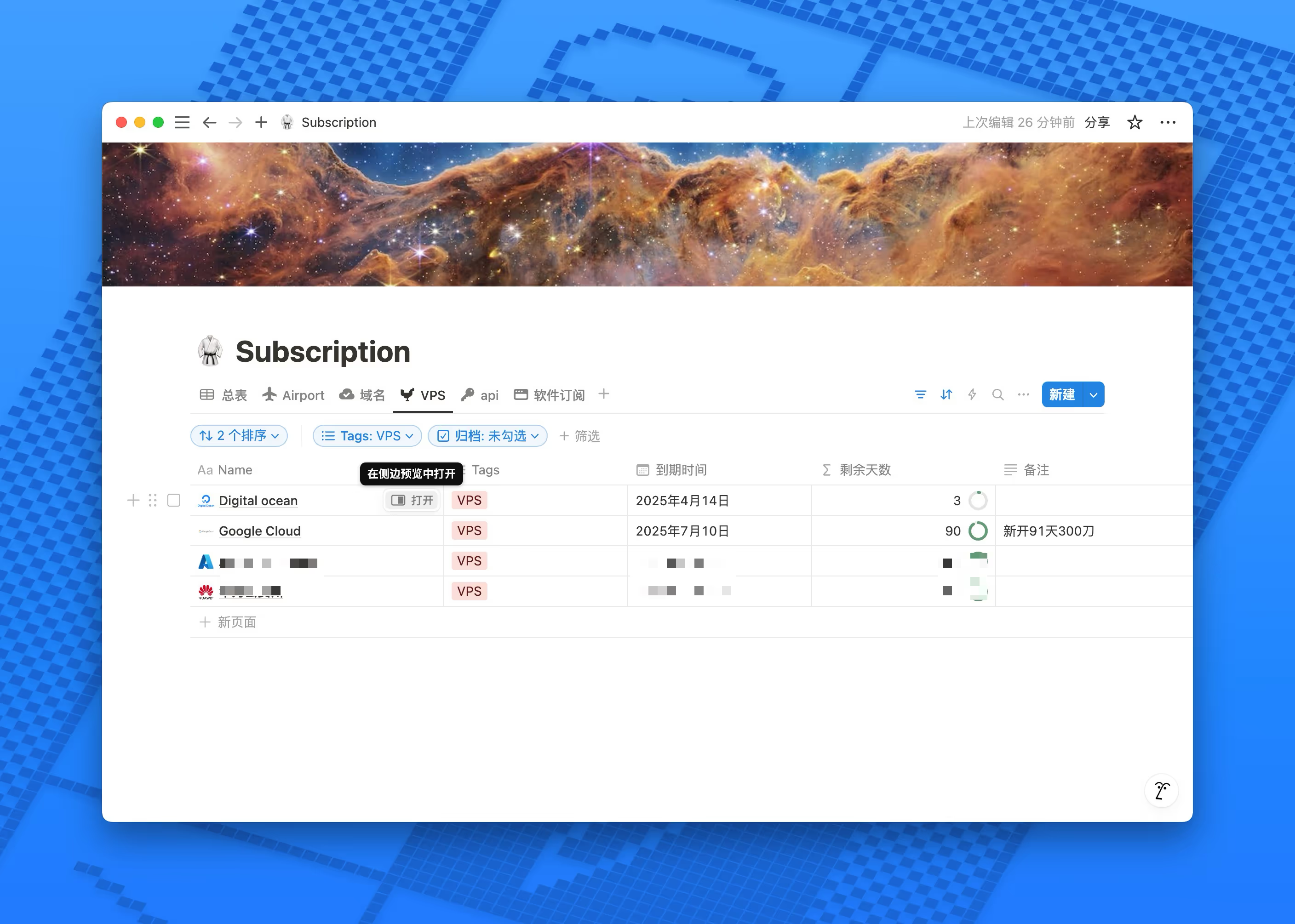Table of contents
Toggle TOC
Introduction
I’ve been using Notion as my subscription service management tool for quite some time. However, manually adding and maintaining subscription records has always been tedious and error-prone, making it easy to overlook important renewals.
With Notion MCP, combined with Cline and large language models (LLM), I can now use natural language conversations to quickly add subscription records to my Notion database. This not only dramatically improves efficiency but also enables advanced automation capabilities.
For example, I can automatically add records to my pre-configured personal subscription table while simultaneously searching the web for brand SVG logos and automatically adding them to the Notion entries—all through simple conversation.
Prerequisites and Setup
1. Install Cline
Cline is a powerful command-line assistant that supports multiple models and tool integrations. For this tutorial, I’m using the Cline plugin installed in Cursor, configured with OpenRouter’s openrouter/quasar-alpha model.
2. Install Notion MCP
MCP (Model Context Protocol) is a plugin framework that enables you to call various APIs through natural language. Notion MCP is an April 2025 plugin specifically designed for Notion operations.
The simplest installation method is:
Simply have a conversation with the LLM in Cline and tell it:
Help me install the Notion MCP plugin
Cline will automatically invoke the model to complete the MCP installation, configuration, and registration—no manual commands required. The entire process is highly intelligent and convenient.
Alternatively, if you prefer manual installation, follow these example steps:
- Navigate to the MCP plugin directory (e.g.,
/Users/your-username/Documents/Cline/MCP) - Run the following commands:
npx @modelcontextprotocol/create-server notion-mcp-server
cd notion-mcp-server
pnpm install
pnpm build- Add the MCP server path to Cline’s configuration file and configure your Notion access credentials.
3. Create and Authorize a Notion Integration
- Log into Notion, click your profile picture in the bottom left, and navigate to Settings & Members.
- Select “Integrations” → “Developer Tools” → “New Integration”.
- Enter a name (e.g., “Automated Subscription Management”), select your workspace, check the required permissions, and generate an internal integration token.
- Click “Show” to copy this token string and configure it in Cline’s environment variables.
 Figure: Notion integration token location and permission selection
Figure: Notion integration token location and permission selection
- Open your subscription management database page, click “Share” in the top right corner, and authorize the integration you just created to access it.
- Copy the 32-character ID from the database page link—this is your database ID for subsequent operations.
Example link format:
https://www.notion.so/your-workspace/xxxxxxxxxxxxxxxxxxxxxxxxxxxxxxxx?v=yyyyyyyyyyyyyyyyyyyyyyyyyyyyyyyyxxxxxxxxxxxxxxxxxxxxxxxxxxxxxxxx is your database ID.
Real-World Example: Adding Subscription Records to Your Notion Database
In actual use, you don’t need to prepare any parameters or write code—simply have a natural conversation with the LLM in Cline to express your needs.
For example, you can tell the LLM:
Help me add a record to my Notion subscription database: I’ve added a VPS subscription, name is Google Cloud, tag is VPS, expiration date is July 10, 2025, note: 91 days for $300.
The LLM will automatically understand your intent, invoke Notion MCP, and complete the addition of this subscription record for you.
 Figure: Cline recognizing natural language and automatically constructing Notion API requests
Figure: Cline recognizing natural language and automatically constructing Notion API requests
The entire process requires no JSON or command-line knowledge—just simple, efficient natural language conversation.
Common Issues and Solutions
In real-world usage, if your conversation prompts are too rough or insufficiently detailed, you might encounter API errors or formatting issues on the first attempt. However, the solution is simply to communicate your requirements more clearly to the LLM using natural language.
If you find the LLM didn’t understand your format or the added content doesn’t meet expectations, it’s usually because the model’s understanding of your description was insufficient.
In such cases, you can try:
- Switch to a multimodal model that supports image and text comprehension
- Send a screenshot or example format of your Notion database directly to the LLM
- This way, the LLM will automatically understand your format and requirements, generating more accurate content
Once the model understands your format, it can automatically complete all operations without you worrying about technical details.
Example: Automatically Adding SVG Brand Icons to Subscription Entries
After adding a subscription record, if you want further optimization, you don’t need to write any code or commands. Simply continue your conversation with the LLM:
Help me add a Google Cloud brand SVG icon to the subscription I just created
At this point, the LLM will automatically invoke Exa Search’s MCP to search the internet for the most appropriate SVG icon link, checking sources like Wikipedia, official brand websites, and icon libraries.
After finding a suitable icon, the LLM will invoke Notion MCP again to automatically set this SVG icon as the page icon for your subscription entry.
![]() Figure: Using Cline to add a Google Cloud SVG icon to a Notion entry
Figure: Using Cline to add a Google Cloud SVG icon to a Notion entry
If you’re not satisfied with the icon, you can simply tell it:
Find a better-looking Google Cloud logo
The LLM will use Exa MCP to search again and replace it with a new icon.
The entire process is completely natural language-driven interaction. Behind the scenes, multiple MCPs are working in coordination, but you don’t need to worry about technical details—just communicate your needs to the LLM in Chinese or English.
 Figure: Brand logo effect displayed in the Notion database after automated subscription record addition. The Google Cloud record shown was added using MCP calls
Figure: Brand logo effect displayed in the Notion database after automated subscription record addition. The Google Cloud record shown was added using MCP calls
Summary
Through Cline + Notion MCP combined with powerful multimodal LLMs, you can easily achieve:
- Automated batch management of Notion databases
- Precise control over field content
- Automatic addition of brand icons to entries
This workflow dramatically reduces manual data entry time while improving data consistency and visual appeal.